Tesco’s evolution from basics to fashion retailer has helped it seize a sizeable chunk of business from high street retailers. And there’s more to come this autumn, the head of its UK clothing business, Jason Tarry, tells Liz Hamson
With its succession of must-have copies of key fashion items from cutting-edge designers, Tesco has spent the past couple of years practising the sincerest form of flattery and making it pay through the sheer volumes. Now, however, the arch-imitator has designs on a bigger prize.
Last week, members of Tesco’s 200-strong clothing team unveiled the new autumn and winter range to 400 category managers and regional directors gathered at the Hilton Metropole in London.
The Grocer was the only member of the media invited to meet the man in charge of Tesco’s UK clothing business, Jason Tarry, and see the presentation of what is not only Tesco’s boldest and most directional range to date, but also its largest, at some 30% broader than the current offer.
The two-day event took place just after rumours broke that former Allders boss Terry Green was being lined up to replace John Hoerner, who has stepped back from day-to-day running of the business to oversee international sourcing. However, on the evidence of the collection, Tarry’s team is not in need of new guidance.
There was a palpable sense of excitement as the autumn range of ladieswear was unveiled. Rifling through the rails of clothing on display afterwards, it was easy to see why. Out have gone clothes that play safe on colours or have a passing similarity to catwalk styles but are of inferior quality. In has come fashion inspired by, rather than slavishly copying, key trends.
Biba, Chatsworth, Dr Zhivago and Mutiny on the Bounty are name-checked as influences for the Florence + Fred range of printed wrap dresses, military-style jackets, waistcoats and kimono-sleeve cardigans, while Babushka, Velvet Underground and Geisha Girl are cited as inspirations for Cherokee’s folkloric, vintage and Asian influenced range.
The offer could well pitch Tesco not only against high street rivals Gap, M&S and Next, but also Oasis, Karen Millen and Whistles, and maybe even the designer brands themselves. It represents a major leap for the multiple, agrees Tarry, appropriately dressed in Finest polo shirt and Florence + Fred shoes. But, he says: “Customers are getting more accepting. Occasionally, it doesn’t work, but it tends to be because we have got the product wrong, not because they don’t want something edgy.”
These clothes are definitely that. Another revelation is their improved quality. During the morning session, a string of buyers takes to the floor to talk excitedly about plans for Florence + Fred and Cherokee. One claims Tesco is benchmarking its offer not just against the likes of Next, M&S and Principles, but also Gucci and Karen Millen. She points out a cashmere jumper that she says is of equal quality to an M&S equivalent, but will cost £25 instead of £75. The main focus, though, has been on making the range more fashionable, says Tarry. Fashion items already make up more than half the Cherokee ladieswear range. Come autumn, shoppers can expect to see the Florence + Fred workwear range develop a more fashionable edge, following last year’s initial efforts which Tarry admits Tesco “didn’t quite get right”.
The autumn/winter range marks the first phase of this workwear vision, with styles akin to what you might find in Next or Dorothy Perkins. Next spring and summer, shoppers will be offered a more fashion-led range, of the sort that might be found in an Oasis, say. There will also be more cross-merchandising to give shoppers an idea of how to “build outfits with hot items”, as one buyer puts it. Celebrity-driven accessories will be a major focus, with Tesco tipping fake fur, metallic belts and bags, long scarves and capes as key trends.
Kidswear, too, has been taken up a notch, with a larger range that includes more partywear. “Kids and babies are an incredible focus for me,” says Tarry. “It’s not something that gets picked up by the media a lot, but it’s incredibly important for our customers.”
Menswear, which Tarry admits is still a season behind ladieswear, hasn’t been left out, with greater emphasis on fashion and workwear. Low prices remain key: there will even be a £32 suit.
But the pièce de résistance is a bigger and bolder denim range. Tesco has introduced 140% more options as well as a premium range, benchmarked against cult designer brands such as Seven For All Mankind and True Religion. The jeans will retail at £10, £15, £20 and £25 price points. A Cherekee buyer reasons: “A good pair of jeans is now the most reusable format in our wardrobes. It’s big business and our long-term goal is to have a big share of that pie. We’re upgrading the quality of the jeans, using hand-finishing techniques and better quality denim. We’re launching the premium denim range and improving the fit as well as providing more information on fit and leg shape.”
It is not just the range that is more ambitious. Taking a cue from American retailers such as The Gap and Old Navy, Tesco plans to transform the denim fixtures in its 25 top stores into branded ‘denim walls’, which vertically merchandise the range alongside other compatible items of clothing. The fixtures will feature prominent PoS material displaying price points and fit. Visual merchandising will play a much stronger role across the board, says Tarry. To accompany the new Florence + Fred workwear range, Tesco is launching black and white PoS material with “an aspirational, editorial feel”. He explains: “In terms of the product, we’re trying to introduce more fashion to the core business. You can see that with the denim and Florence + Fred, where we’ve taken workwear forward with a twist.”
The expanded range will largely be accommodated in the bigger stores coming on stream, says Tarry. “We’re increasingly opening larger clothing departments in stores of about 10,000 sq ft.” Tesco is also working hard to optimise merchandising and layout to squeeze as much out of the space it has, he adds.
He concedes that if certain items are particularly popular there could be availability problems but says they will either try to order more stock or replenish the line with a similar alternative.
The new non-transactional web site, which lists by store what is available, helps. But swift replenishment is key and Tesco is rolling out shelf-ready packaging wherever feasible.
Meanwhile, the team is pulling out all the stops to ensure its offer is up to the minute. “Clearly we need to get trends and our looks ready a long way in advance. We’re working a year out typically, but where we see something that has taken off close to the season, we try to get into it,” says Tarry. “What determines lead times is where the office is - if it’s in Turkey, it’s shorter than if it’s in China.”
Talking of China, retailers are expected to be hit hard by the introduction of EU export limits. Tarry confirms that much of Tesco’s clothing comes from China. But, he says: “We also source a lot from India and Europe.”
The biggest challenges are closer to home, he argues. One test will be how well the full range goes down at the four new non-food stores. Arguably the biggest test for Tesco remains making the most of the limited space available.
Tarry says: “Visual merchandising is key to success and that means compliance has to be spot-on. One of my major priorities is getting more space and making the space we already have sweat more.”
With its succession of must-have copies of key fashion items from cutting-edge designers, Tesco has spent the past couple of years practising the sincerest form of flattery and making it pay through the sheer volumes. Now, however, the arch-imitator has designs on a bigger prize.
Last week, members of Tesco’s 200-strong clothing team unveiled the new autumn and winter range to 400 category managers and regional directors gathered at the Hilton Metropole in London.
The Grocer was the only member of the media invited to meet the man in charge of Tesco’s UK clothing business, Jason Tarry, and see the presentation of what is not only Tesco’s boldest and most directional range to date, but also its largest, at some 30% broader than the current offer.
The two-day event took place just after rumours broke that former Allders boss Terry Green was being lined up to replace John Hoerner, who has stepped back from day-to-day running of the business to oversee international sourcing. However, on the evidence of the collection, Tarry’s team is not in need of new guidance.
There was a palpable sense of excitement as the autumn range of ladieswear was unveiled. Rifling through the rails of clothing on display afterwards, it was easy to see why. Out have gone clothes that play safe on colours or have a passing similarity to catwalk styles but are of inferior quality. In has come fashion inspired by, rather than slavishly copying, key trends.
Biba, Chatsworth, Dr Zhivago and Mutiny on the Bounty are name-checked as influences for the Florence + Fred range of printed wrap dresses, military-style jackets, waistcoats and kimono-sleeve cardigans, while Babushka, Velvet Underground and Geisha Girl are cited as inspirations for Cherokee’s folkloric, vintage and Asian influenced range.
The offer could well pitch Tesco not only against high street rivals Gap, M&S and Next, but also Oasis, Karen Millen and Whistles, and maybe even the designer brands themselves. It represents a major leap for the multiple, agrees Tarry, appropriately dressed in Finest polo shirt and Florence + Fred shoes. But, he says: “Customers are getting more accepting. Occasionally, it doesn’t work, but it tends to be because we have got the product wrong, not because they don’t want something edgy.”
These clothes are definitely that. Another revelation is their improved quality. During the morning session, a string of buyers takes to the floor to talk excitedly about plans for Florence + Fred and Cherokee. One claims Tesco is benchmarking its offer not just against the likes of Next, M&S and Principles, but also Gucci and Karen Millen. She points out a cashmere jumper that she says is of equal quality to an M&S equivalent, but will cost £25 instead of £75. The main focus, though, has been on making the range more fashionable, says Tarry. Fashion items already make up more than half the Cherokee ladieswear range. Come autumn, shoppers can expect to see the Florence + Fred workwear range develop a more fashionable edge, following last year’s initial efforts which Tarry admits Tesco “didn’t quite get right”.
The autumn/winter range marks the first phase of this workwear vision, with styles akin to what you might find in Next or Dorothy Perkins. Next spring and summer, shoppers will be offered a more fashion-led range, of the sort that might be found in an Oasis, say. There will also be more cross-merchandising to give shoppers an idea of how to “build outfits with hot items”, as one buyer puts it. Celebrity-driven accessories will be a major focus, with Tesco tipping fake fur, metallic belts and bags, long scarves and capes as key trends.
Kidswear, too, has been taken up a notch, with a larger range that includes more partywear. “Kids and babies are an incredible focus for me,” says Tarry. “It’s not something that gets picked up by the media a lot, but it’s incredibly important for our customers.”
Menswear, which Tarry admits is still a season behind ladieswear, hasn’t been left out, with greater emphasis on fashion and workwear. Low prices remain key: there will even be a £32 suit.
But the pièce de résistance is a bigger and bolder denim range. Tesco has introduced 140% more options as well as a premium range, benchmarked against cult designer brands such as Seven For All Mankind and True Religion. The jeans will retail at £10, £15, £20 and £25 price points. A Cherekee buyer reasons: “A good pair of jeans is now the most reusable format in our wardrobes. It’s big business and our long-term goal is to have a big share of that pie. We’re upgrading the quality of the jeans, using hand-finishing techniques and better quality denim. We’re launching the premium denim range and improving the fit as well as providing more information on fit and leg shape.”
It is not just the range that is more ambitious. Taking a cue from American retailers such as The Gap and Old Navy, Tesco plans to transform the denim fixtures in its 25 top stores into branded ‘denim walls’, which vertically merchandise the range alongside other compatible items of clothing. The fixtures will feature prominent PoS material displaying price points and fit. Visual merchandising will play a much stronger role across the board, says Tarry. To accompany the new Florence + Fred workwear range, Tesco is launching black and white PoS material with “an aspirational, editorial feel”. He explains: “In terms of the product, we’re trying to introduce more fashion to the core business. You can see that with the denim and Florence + Fred, where we’ve taken workwear forward with a twist.”
The expanded range will largely be accommodated in the bigger stores coming on stream, says Tarry. “We’re increasingly opening larger clothing departments in stores of about 10,000 sq ft.” Tesco is also working hard to optimise merchandising and layout to squeeze as much out of the space it has, he adds.
He concedes that if certain items are particularly popular there could be availability problems but says they will either try to order more stock or replenish the line with a similar alternative.
The new non-transactional web site, which lists by store what is available, helps. But swift replenishment is key and Tesco is rolling out shelf-ready packaging wherever feasible.
Meanwhile, the team is pulling out all the stops to ensure its offer is up to the minute. “Clearly we need to get trends and our looks ready a long way in advance. We’re working a year out typically, but where we see something that has taken off close to the season, we try to get into it,” says Tarry. “What determines lead times is where the office is - if it’s in Turkey, it’s shorter than if it’s in China.”
Talking of China, retailers are expected to be hit hard by the introduction of EU export limits. Tarry confirms that much of Tesco’s clothing comes from China. But, he says: “We also source a lot from India and Europe.”
The biggest challenges are closer to home, he argues. One test will be how well the full range goes down at the four new non-food stores. Arguably the biggest test for Tesco remains making the most of the limited space available.
Tarry says: “Visual merchandising is key to success and that means compliance has to be spot-on. One of my major priorities is getting more space and making the space we already have sweat more.”







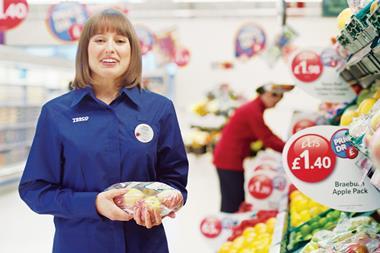

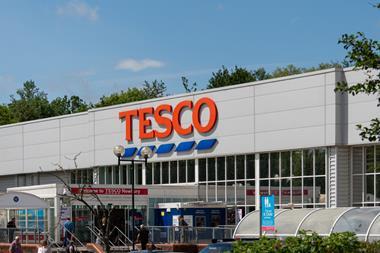

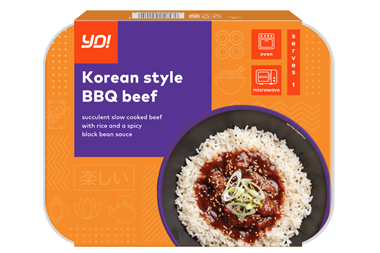
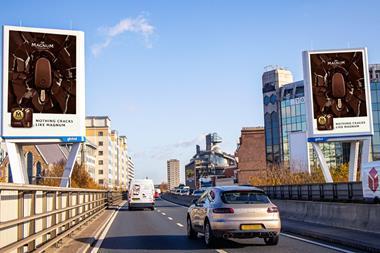

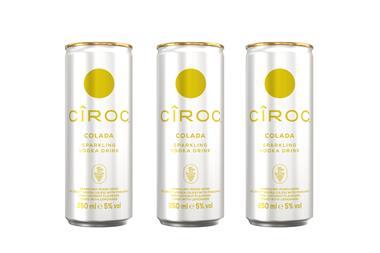
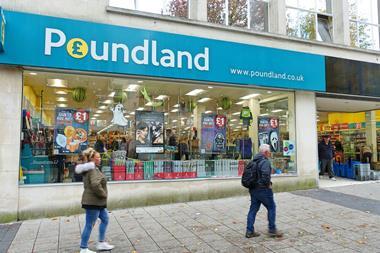

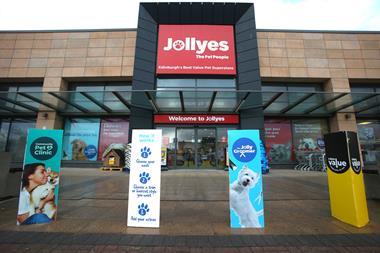
No comments yet